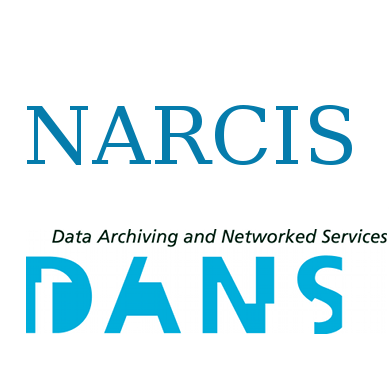Focal point
Location
National Academic Research and Collaborations Information System (NARCIS) is the main Dutch national portal for those looking for information about researchers and their work. NARCIS aggregates data from around 30 institutional repositories. Besides researchers, NARCIS is also used by students, journalists and people working in educational and government institutions as well as the business sector.
NARCIS provides access to scientific information, including (open access) publications from the repositories of all the Dutch universities, KNAW, NWO and a number of research institutes, datasets from some data archives as well as descriptions of research projects, researchers and research institutes.
This means that NARCIS cannot be used as an entry point to access complete overviews of publications of researchers (yet). However, there are more institutions that make all their scientific publications accessible via NARCIS. By doing so, it will become possible to create much more complete publication lists of researchers.
In 2004, the development of NARCIS started as a cooperation project of KNAW Research Information, NWO, VSNU and METIS, as part of the development of services within the DARE programme of SURFfoundation. This project resulted in the NARCIS portal, in which the DAREnet service was incorporated in January 2007. NARCIS has been part of DANS since 2011.
DANS - Data Archiving and Networked Services - is the Netherlands Institute for permanent access to digital research resources. DANS encourages researchers to make their digital research data and related outputs Findable, Accessible, Interoperable and Reusable.
Members:
Resources
Displaying 56 - 60 of 1863Space-based SAR and optical remote sensing for productivity monitoring and mapping of sugarcane
In this study, research on productivity and land cover monitoring is presented, with a focus on sugarcane, based on space-based remote sensing observations that were collected by Synthetic Aperture Radar (SAR) and optical sensors. The study aims to provide new insights into techniques and methodologies that allow for cost-efficient monitoring of sugarcane productivity and the wide-scale expansion of sugarcane over long time series.
Scenario analysis for integrated water resources management under future land use change in the Urmia Lake region, Iran
Arid and semi-arid regions are particularly vulnerable to global environmental change because of their fragile climatic conditions. The rapid development of land use is expected to affect aquatic ecosystems in these regions. In this study, we focused on how land use change affects the stream flow and inflow to Urmia Lake in the Mordagh Chay basin, Iran. This case-study exemplifies dynamics found across a much larger region. We mapped changes in land use between 1993–2015 using satellite imagery and modeled future changes using the Dyna-CLUE model.
Joint ISO/TC211 and OGC Revision of the LADM: Valuation Information, Spatial Planning Information, SDG Land Indicators, Refined Survey Model, Links to BIM, Support of LA Processes, Technical Encodings, and Much More on Their Way!
ISO standards, which are actually being applied, are subject to periodic revision, typically in a 6 to 10-year cycle. A UN-GGIM Meeting of the Expert Group on Land Administration and Management was held on 14-15 March 2017, in Delft and the main conclusion was that the revision of LADM was indeed needed in order to provide better tools to improve tenure security and better land and property rights for all.
Mapping settlement systems in China and their change trajectories between 1990 and 2010
A wide variety of settlement systems exist, ranging from small villages to large metropolises. However, spatial analyses are typically confined to the mere presence or absence of built-up land and the changes therein, while more subtle differences between various settlement systems are ignored. In this paper we study the spatial distribution of Chinese settlements in terms of their built-up land, cluster density and cluster size, as well as their changes between 1990 and 2010.
Land use change and the migration geography of Greater White-fronted geese in European Russia
Large areas of agricultural land have been abandoned in European Russia since 1991, triggering succession toward more wooded landscapes, especially in northern regions where conditions for agriculture are more challenging. We hypothesize that this process has contributed to a southward shift by migratory Atlantic Greater White-fronted geese, as stopover sites in northern Russia became progressively less suitable. To test this hypothesis, we located stopover sites from information contained in 2976 ring recoveries and sightings of neck-collared geese.


